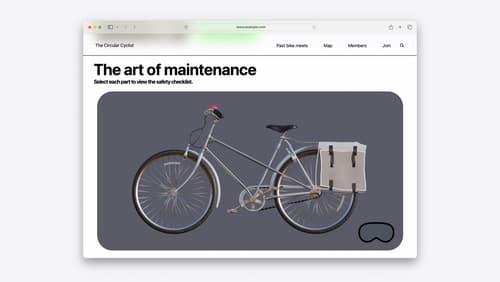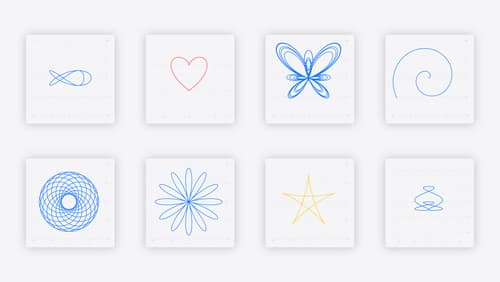how to check if point is inside circle
Asked on 2024-08-22
1 search
To check if a point is inside a circle, you can use the mathematical formula that involves calculating the distance between the point and the center of the circle. If this distance is less than or equal to the radius of the circle, the point is inside the circle. This concept is often used in graphics and game development.
In the context of the WWDC sessions, the session titled "Explore game input in visionOS" discusses gestures involving circles. Specifically, it mentions checking the distance between the tips of fingers to recognize a circle-shaped gesture. This is similar to checking if a point is inside a circle, as it involves calculating distances to determine spatial relationships.
For more detailed information on creating custom gestures, you can refer to the Explore game input in visionOS session at the "Custom gestures" chapter.

Optimize for the spatial web
Discover how to make the most of visionOS capabilities on the web. Explore recent updates like improvements to selection highlighting, and the ability to present spatial photos and panorama images in fullscreen. Learn to take advantage of existing web standards for dictation and text-to-speech with WebSpeech, spatial soundscapes with WebAudio, and immersive experiences with WebXR.

Swift Charts: Vectorized and function plots
The plot thickens! Learn how to render beautiful charts representing math functions and extensive datasets using function and vectorized plots in your app. Whether you’re looking to display functions common in aerodynamics, magnetism, and higher order field theory, or create large interactive heat maps, Swift Charts has you covered.

Optimize your 3D assets for spatial computing
Dive into an end-to-end workflow for optimized 3D asset creation. Discover best practices for optimizing meshes, materials, and textures in your digital content creation tool. Learn how to harness shader graph, baking, and material instances to enhance your 3D scene while optimizing performance. Take advantage of native tools to work more effectively with your assets and improve your app’s performance.
